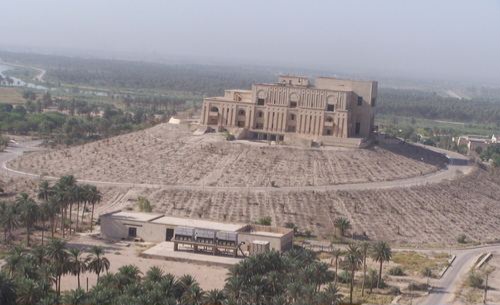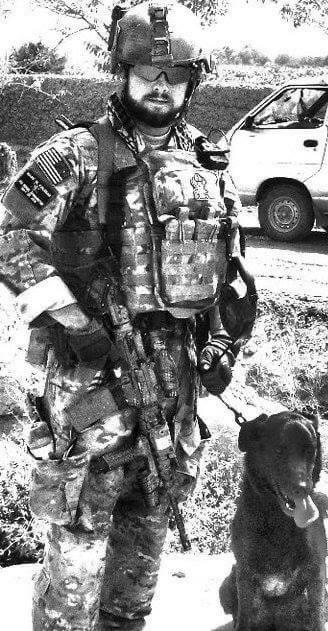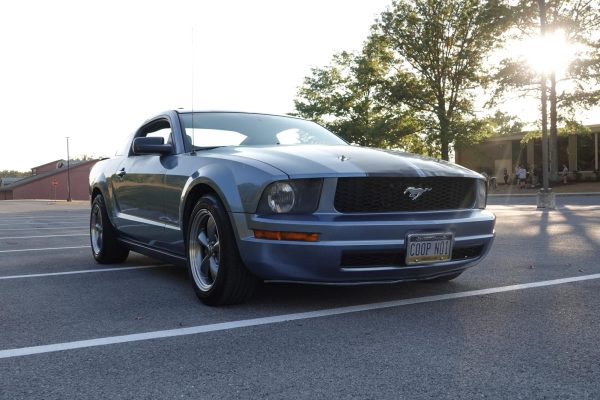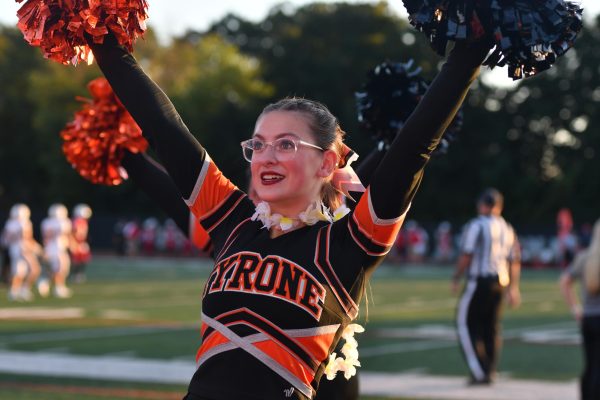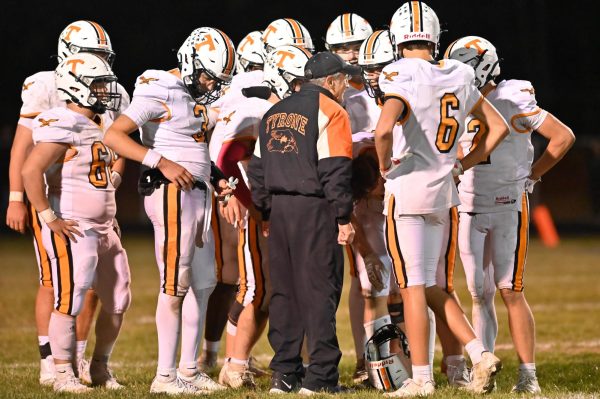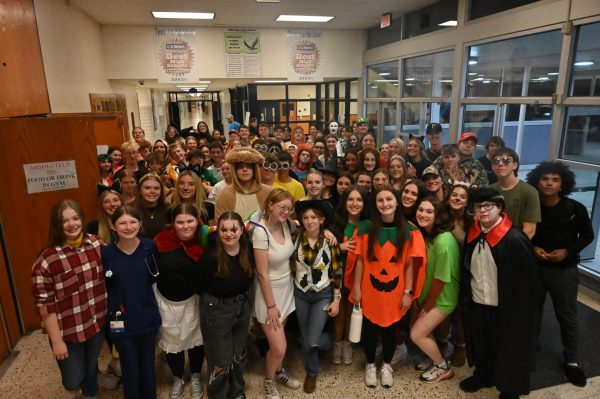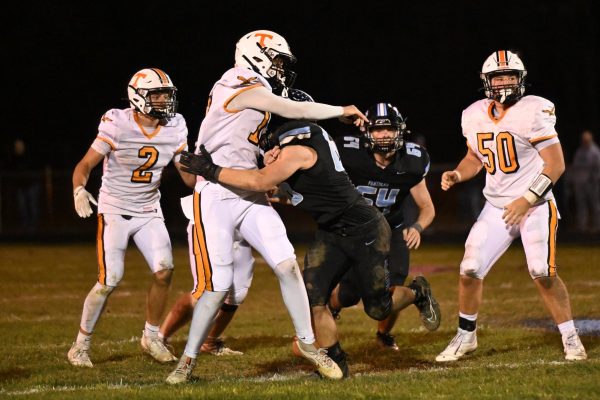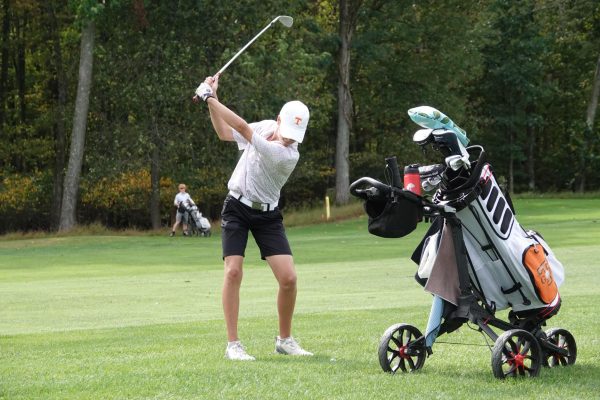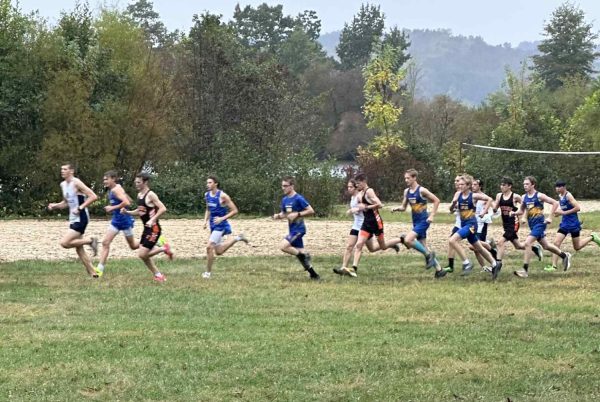Local Veterans Reflect on the Iraq War
This year marks the 20th anniversary of the start of the Iraq War
The US Invasion of Iraq began 20 years ago this spring. At over seven years in length, it was one of the United States’ longest wars.
At its peak in 2007, over 170,000 U.S. troops served in Iraq. Seeking a deeper understanding of the experience of US servicemen, the Eagle Eye interviewed three local veterans, John Bebey, Scott Sessaman, and David Varkett, about their experiences serving in Iraq.
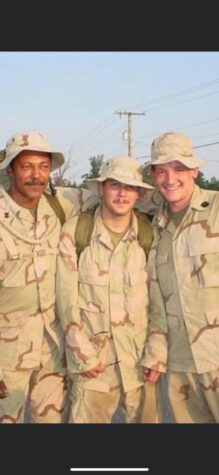
(Photo courtesy of John Bebey)
John Bebey
John Bebey currently resides in Centre Hall, PA, and while growing up, John always knew that he wanted to serve in the military.
“I joined the Marines because I knew I was going into the military and thought I should join the baddest branch.”
Like many American troops in 2003, Bebey was sent to Kuwait where he trained and prepared for the inevitable Invasion of Iraq. John crossed the border into Iraq in late March upon President Bush’s order for the invasion.
“It was an endless desert for miles. You occasionally would come upon a small city,” said Bebey.
Bebey’s division was there to support the invading forces. His job was to protect medical personnel treating wounded American soldiers and Iraqi civilians.
His lasting memory was returning a local Iraqi and his deceased brother to their home village. As a 20-year-old Marine, Bebey took a big risk to deliver this man back to his home, some 20 miles away from camp, but he wanted to help this man who had already lost so much in the war, including his brother.
“Most of the Iraqis were friendly and most were happy we were there,” said Bebey.
He and his fellow Marines pushed all the way to Baghdad and were not far from Firdos Square where hordes of Iraqis famously toppled a statue of Saddam Hussein.
Following the invasion, John was sent to Southern Iraq to help with operations going on there.
“All we had to eat over there was our MREs which we would get tired of, so a group of us would sneak off and go to local restaurants and try the native foods,” said Bebey.
Bebey returned home from Iraq on July 4, 2003, after spending six months in the Middle East and left the military in August 2004 .
“I think that even though there might have been some mistakes, I believe we accomplished our goals over there,” said Bebey.
Scott Sessaman
Scott Sessaman is a well-known native of Tyrone. Sessaman is best known to TAHS students for coaching the track team in pole vault.
But long before that, Sessaman joined the Army in 1988.
“I joined the military because I had a lot of family that served and so I wanted to do what they had done,” said Sessaman.
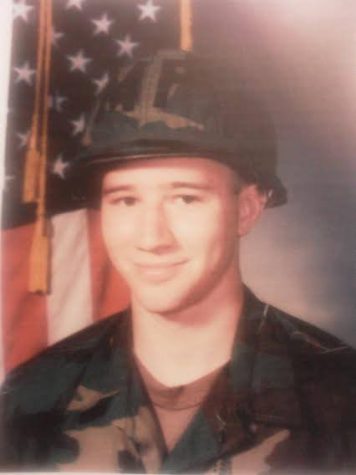
Sessaman has visited over 30 countries while serving in the Army.
He was deployed to Kuwait in February 2003 and left for Iraq once the invasion commenced.
Sessaman, much like Bebey, supported the invading forces. Following the Invasion, Scott and his fellow soldiers had to help rebuild the country. One of Scott’s jobs was recapturing high-level Iraqi prisoners who Saddam Hussein had released to spread chaos during the invasion.
“Saddam released all of the prisoners from all of the prisons to try and slow the invasion and cause confusion and chaos,” said Sessaman.
“About 80% of the Iraqis I dealt with were friends,” said Sessaman.
“One of the coolest things I did while over there was going through the ruins of Babylon. It brought me back to when I was in school learning about it.” Sessaman made many friends while in Iraq. “I was really good friends with my interpreter,” said Sessaman.
Sessaman spent six months in Iraq.
“I believe that we did the right thing going over there,” said Sessaman reflecting on his time in Iraq.
Sessaman left the Army in 2004.
David Varkett
David Varkett currently resides in Ashtabula, Ohio and grew up around Erie, PA. Varkett served in the Army 101st Airborne Division and was sent to Iraq during the troop surge in 2008.
At the time of David’s deployment to Iraq, the country was engulfed in a mass insurgency.
The group AQI, an Al-Qaeda affiliate in Iraq, had taken control of much of the cities surrounding Baghdad known as the Sunni Triangle.
AQI goal was to carve out their own theocratic Islamic state in Iraq.
David fought several insurgents in this area including in the notorious insurgent stronghold of Sadr City.
“A majority of the insurgents we were fighting were not even from Iraq. They came from other areas of the Middle East, mostly Jordan, Lebanon, and Saudi Arabia because they just wanted a chance to kill Americans,” said Varkett. “It was hard to fight [the insurgents] because they would try and blend in with the locals.”
Many of the insurgents would hide in temples and mosques. Because these buildings were considered religious sites, American troops couldn’t attack or bomb them.
Varkett would later also serve in the global fight against terrorism in Afghanistan.
Varkett would often speak to the locals about their culture and religion, so he could get a better understanding of how the Muslim people lived their lives.
“A lot of people, I think, see me and think that I hate Middle Eastern people, and I really don’t. I have a deep respect for their culture and religion. The Iraqis and Afghans are truly hard-working people and the decades of war have really made them tough people, and I really respect them for that.”
David joined an explosive K9 unit and would help diffuse roadside bombs and IEDs in Iraq and Afghanistan.
“I was hit with about 7 IEDs while serving in Iraq and Afghanistan,” said Varkett.
Varkett proudly looks back on his time in the Middle East.
“9/11 was one of the reasons I joined the military. When I saw people jumping out of those buildings in New York, I knew I had to do something, and I wanted to hold those people accountable for what they did to us that day. I truly do believe that we did the right thing over there and completed our mission,” said Varkett.
US troops were withdrawn from Iraq in 2011, bringing the war to an end.
The US returned to Iraq in 2014 when the terrorist group known as the Islamic State, the successor to AQI, had taken over much of Iraq and Syria.
Today there are still approximately 2,500 American soldiers in Iraq.
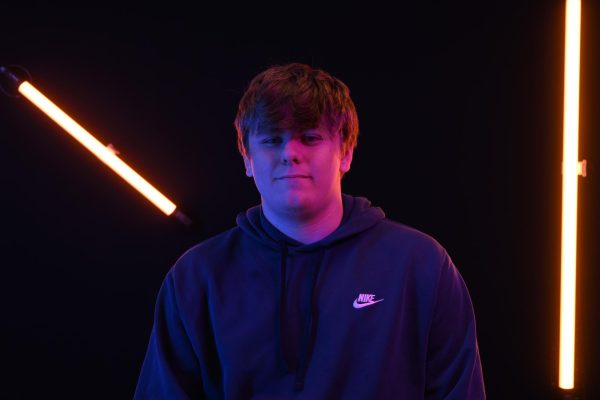
Quinn Cowher is a junior at Tyrone Area High School for the 2023-2024 school year. This is his third year as a member of the Tyrone Eagle Eye news, and...



